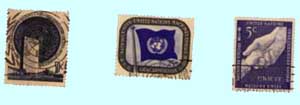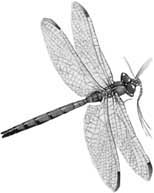| Hello Children,
Did you know that hundreds of lives are destroyed due to the landmines.
Recently some of the children in London got together to protest against
the use of landmines. Certain countries such as China and Russia have still
not agreed to ban landmines. The effort taken by these people of a variety
of ages showed their unity.
Even in our country we have a on going civil war. There is a lot
of hatred between the Sinhalese and Tamils but deep down we're all the
same. So we must learn to live together as one. Then as you grow older
you will all be able to live together in harmony. Then there will be no
need for all these wars.
Until next week,
Aunty Sunshine
|
Save plants that save us
There are various kinds of trees in the world. However they all exist
to all human beings that live on the earth and in the water. They give
us food, timber, medicines and also they help animals by sheltering them.
They also purify the earth.
As human beings we can't live without food and water and different kinds
of fruits, vegetables and leaves. The timber takes second place to this.
Timbers are taken to make houses, buildings, boats and furnitures. Next
we can say about medicines. Trees and plants give us same.
So we must protect trees. Because we can't think future of the world
without trees. Most wood cutters are there. Some people cut down very large
trees. Some time to grow. Therefore we can do many activities to protect
trees.
"Million houses under a shade of billion trees."
Written by Nishani Fernando
Holy Family Convent
Wennappuwa.
STAMP NEWS 30
An exception to the rule
Let us move away from Sri Lanka stamps for a while and look at stamps
issued by an international organisation, which was granted the right to
issue stamps 47 years ago. Until then the right to issue stamps was reserved
for sovereign states.
Just over fifty years ago a stamp collector was President of the Argentine
delegation to the United  Nations.
His name was Jose Arce. When he became President of the General Assembly,
he submitted a draft resolution, which created the United Nations Postal
Administration (UNPA) and the issue of the first UN stamps in October 1951. Nations.
His name was Jose Arce. When he became President of the General Assembly,
he submitted a draft resolution, which created the United Nations Postal
Administration (UNPA) and the issue of the first UN stamps in October 1951.
Mr. Arce pointed out that UN stamps would carry to all people's messages
of the purposes, ideals and work of the United Nations. He believed that
these small pieces of paper were a powerful communications tool. They would
also contribute funds for the work of the UN.
Over the years UN stamps have been roving ambassadors - messengers that
transcend borders of geography and language. "They express shared
challenges and progress. They portray the common experience of all humanity
in their shared world, flora, fauna, science, arts, traditions," states
an UNPA publication.
The first UN stamps were issued on 24 October 1951 from the UN Headquarters
in New York. Later UN offices in Geneva and Vienna also started issuing
stamps. The first stamps from the Palais des Nations in Geneva were issued
on 4 October 1969. The first issues from the Vienna International Centre
came out on 24 August 1979. Thus the UN stamps are in three currencies
- US Dollar, Swiss Franc and Austrian shilling.
Among postal stationery issued by UNPA are postal cards, envelopes,
air letters (aerogrammes), souvenir cards, miniature sheets, and first
day covers.
Definitive stamps and postal stationery are issued to meet the postal
rates and the requirements of the postal services in the USA, Switzerland
and Austria. Commemoratives honour the work of a UN Agency or activity.
On an average, these are issued six times a year.
The first UN stamps (definitives) depicted Peoples of the World, UN
Headquarters building, UN Flag, UNICEF, and the message 'Peace, Justice,
Security'.
 How
an insect lives How
an insect lives
Insects have many dif- ferent ways of feeding, depending on what kind
of food they eat. The mouth consists of three parts — the mandibles, the
maxillae and the labium. Some examples of feeding are shown on this page.
Hunting insects, such as some beetles, wasps and dragonflies, have powerful
mandibles, or jaws, with which they can catch and chew up their food. They
are usually swift moving in order to catch their  prey.
Most caterpillars also have strong jaws for eating plants. The grubs of
the wood-boring beetle can even chew through wood. prey.
Most caterpillars also have strong jaws for eating plants. The grubs of
the wood-boring beetle can even chew through wood.
Other insects use their mouths for sucking up soft food, such as plant
juices or blood. A bug such as a greenfly, has a sharp labium which pierces
a leaf in order to suck up the sap. Water bugs catch and suck out the contents
of their prey. Bugs which feed on other animals suck up their blood. A
flea feeds in this way, as do gnats and mosquitoes.
The housefly and its relatives have a pad-like tongue, or proboscis,
which is pressed on to their food. Since flies feed on filth as well as
human food they cause disease by spreading germs.
Butterflies have long tongues which uncoil when they want to sip nectar
from flower, or drink water. A butterfly can be kept alive simply by feeding
it on some sugary water. It requires little energy since it does not grow.
On the other hand its caterpillar needs constant feeding because it is
growing all the time. Many caterpillars will only feed on a certain food-plant
and the mother butterfly seems to know just where to lay her eggs. Some
moths are even named after the food which their caterpillars eat, such
as the poplar and privet hawk moths.
Sometimes when there is a food shortage insects have to go on a hunger
strike, or die. Sometimes, if the weather is right, there is a plague of
insects. This happens especially with locusts.
How insects breathe
Unlike humans, insects have no nose with which to breathe in air. Nor
do they have lungs. Our lungs pick up the oxygen from the air we breathe
in and pass it to the blood. The oxygen is carried by the blood to the
various organs in the body.
Insects have little or no oxygen in the blood. Instead, as they breathe,
air containing oxygen is passed directly to the body tissue by a complicated
system of tube, called tracheae. These take the place of blood vessels
and windpipe.
The main tracheae run along and cross the body in a ladder like form,
with smaller and smaller branches reaching the different organs. The organs
take up the oxygen when it is needed.
The air breathed in enters the tracheae through a number of holes, called
spiracles, along the sides of the body. In some insects air can be stored
inside the body in special air-sacs.
If you watch an insect it is possible to see a pumping action in the
abdomen as a fresh supply of air is pushed in. In hot weather or in dry
surroundings the spiracles close to stop the insect losing water.
Breathing underwater
Water insects have two ways of breathing. Some insects come up to the
surface for their supply of air while others can breathe underwater. Water
beetle or water bug rises to the surface and collects a bubble of air which
sticks to its body as it dives under. Many insect larvae have a breathing
tube, or siphon, which can be pushed through the water surface to reach
the air. A gnat larva will hang on to the surface by its siphon.
There are some insect larvae which have special organs for breathing
underwater. These organs are called tracheal gills. Like fish gills, they
can pick up the dissolved oxygen from the water. Rows of gills occur along
the side of a mayfly, and they twitch constantly. This disturbs the water
and helps to remove the oxygen from it. The stone-fly larva is another
insect which breathes in this fashion
Dragonfly larvae use two methods. The delicate damselfly nymphs have
long gills at the end of their bodies, whereas the larger hunting dragonflies
have gills inside, at the end of the food canal.
Unusual mud-dwellers
Bloodworms, really the larvae of certain midges, are coloured bright
red because they contain haemoglobin. This is the substance that colours
human blood but it is rare in insects. It carries the oxygen around the
body. Since blood worms live in mud where there is little oxygen, the haemoglobin
helps to keep them alive.
|





 Nations.
His name was Jose Arce. When he became President of the General Assembly,
he submitted a draft resolution, which created the United Nations Postal
Administration (UNPA) and the issue of the first UN stamps in October 1951.
Nations.
His name was Jose Arce. When he became President of the General Assembly,
he submitted a draft resolution, which created the United Nations Postal
Administration (UNPA) and the issue of the first UN stamps in October 1951.
 prey.
Most caterpillars also have strong jaws for eating plants. The grubs of
the wood-boring beetle can even chew through wood.
prey.
Most caterpillars also have strong jaws for eating plants. The grubs of
the wood-boring beetle can even chew through wood.